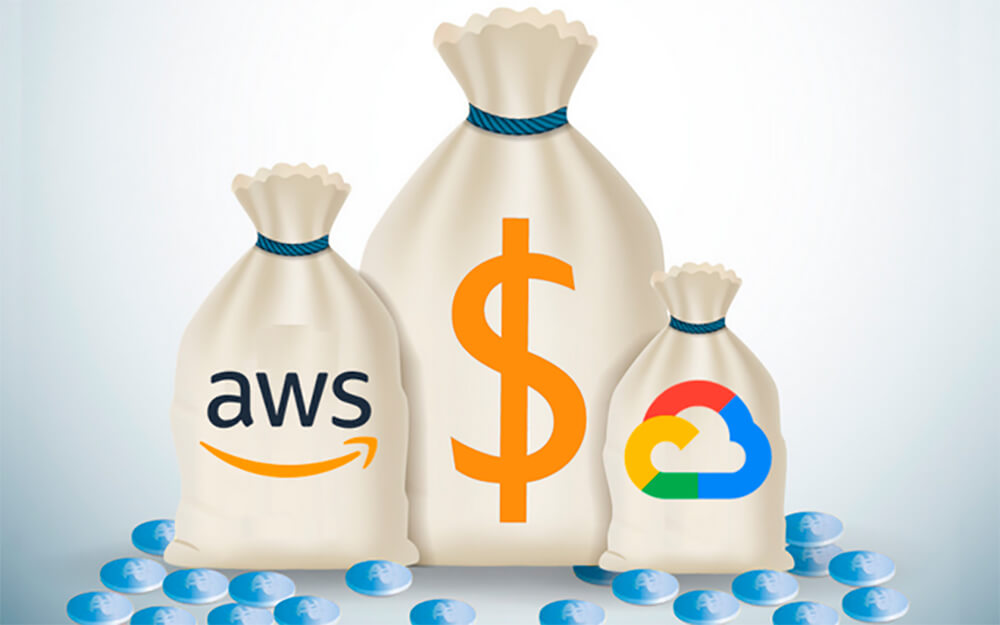In a cloud initiative, there is much more to think about than just price per instance. Businesses should also consider types of service, security, and network costs. Understanding cloud pricing encompasses many different aspects of possible expenditures, which is necessary to avoid sticker shock when the first bill comes.
Why Is Cloud Services Pricing So Complex?
Cloud computing is designed to provide value to enterprises-and it does-but sometimes it can be challenging to sort out all of the elements involved in a pricing plan. Some complicating factors can include:
- Variable components in the cloud solution (operating system, network, disk space, memory, etc.) that can be easy to lose track of
- Different providers can mean different terminology. Cloud service products might be named one thing at one vendor and something completely different from another vendor.
- On-demand pricing is different from an on-premise model. Learning to pay for time used can have a steep learning curve when companies are used to heritage systems that can be left running with no financial impact. Receiving invoices that show cloud environment usage per hour, per minute, or even per second is enough to confuse even sophisticated users.
- Services within a cloud solution are billed differently. For example, Infrastructure as a Service (IaaS) uses virtual machines, whereas Platform as a Service (PaaS) providers bill in another way.
Comparison Shopping When Costing Individual Cloud Solutions
While it is possible to compare cloud solution costs, it’s not always wise. Some cloud costs are constantly changing because of market competition, and providers can consolidate, leading to unwelcome pricing increases. Another variable is that cloud provider packages may contain several services that obscure individual elements’ actual prices. The primary reason to not do too much cost comparison is that cloud infrastructures will never be the same between any two businesses. There is no set solution for every company, and the highly flexible nature of cloud infrastructure is both a benefit and a detriment in this sense.
Some cloud providers will charge for services like replication, while others consider it a standard feature without an extra charge. Similarly, some providers charge for varying levels of network traffic while others do not.
Learning about cloud provider pricing models can be a time-consuming task when considering prices and service differences. This will never be an apples-to-apples task, so it’s essential to understand your business goals and objectives.
Should You Buy Current or Future Requirements Cloud Services?
Keeping costs to a minimum is the mantra for all technology managers, but sometimes it pays to buy services in advance to realize long-term cost efficiencies. The purchase price of a cloud solution is just one factor to consider. Making appropriate purchasing decisions should incorporate existing and future needs. Buying simply on low-cost line items won’t be of much value if the solution doesn’t meet your company’s needs.
What Should You Expect from A Cloud Service Provider’s Pricing and Packaging Plans?
When you’re considering the best cloud service provider for your business, you should expect the following:
- The company should show its value through differentiation, not competing with other vendors on price.
- The cloud provider should bundle high-value services as a fixed element in their contract.
- The cloud services contract should point out both recurring and non-recurring monthly fees.
- Pricing plans should expressly point out the customer value in the cloud solution.
- The pricing document should clearly define the cloud solution components while allowing for customization depending on the customer’s needs.
- All pricing plans should be consistent and show clarity of the company’s deliverables.
After your cloud migration, there are pricing elements that you should monitor every month:
- Understanding how each of the services is billed
- Any services that aren’t being utilized or might be superfluous
It might seem complicated, but it’s not impossible to understand cloud service pricing. Pantek can help you find the right cloud provider to meet your company’s goals and expectations and manage your cloud infrastructure so that your business can run smoothly. Contact us today.

